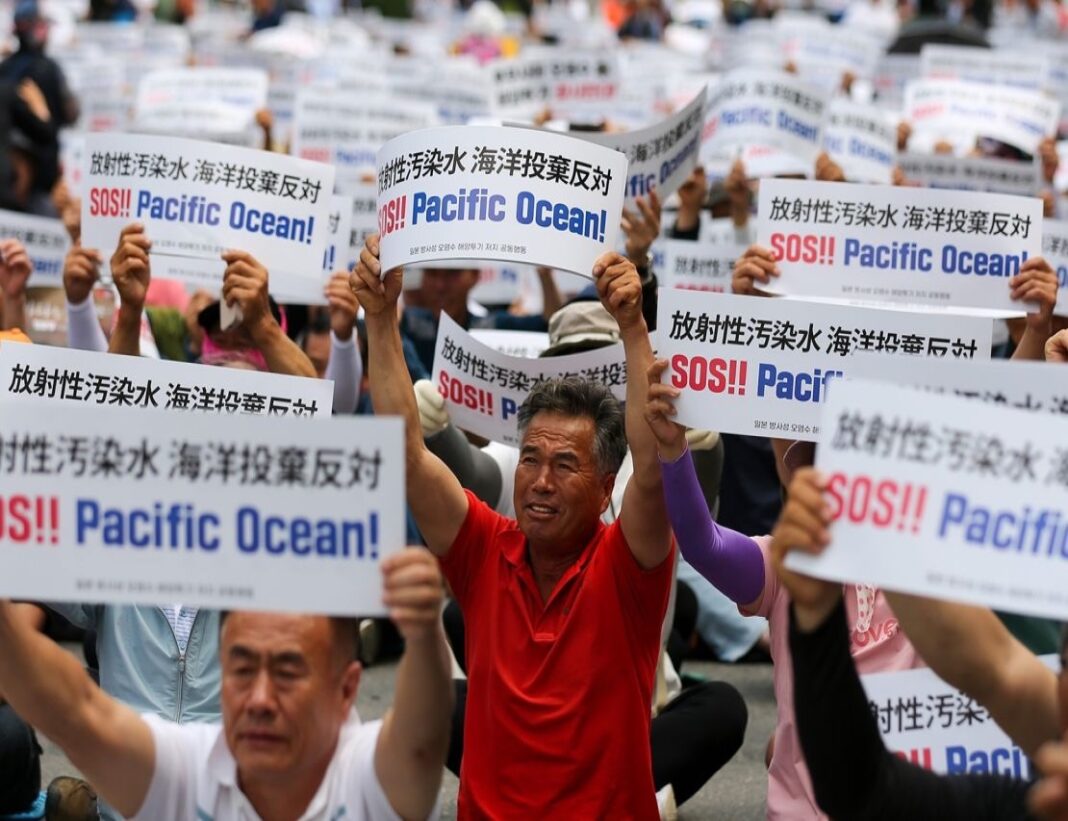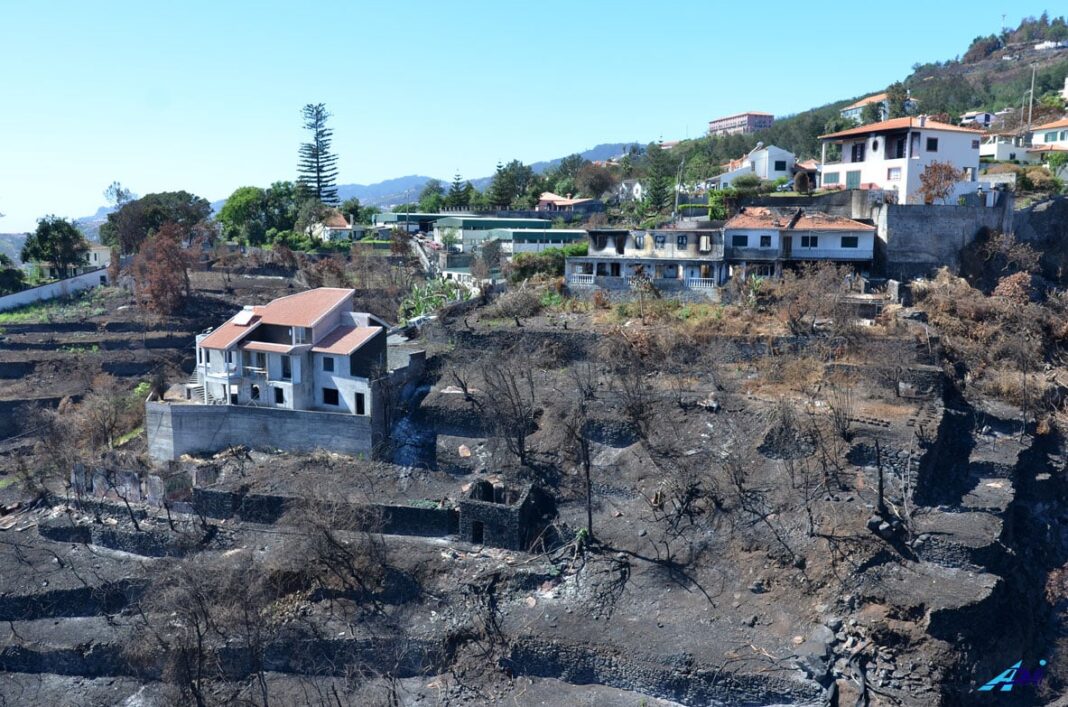Despite the concerns of several nations and international groups, Japan has started to release into the Pacific Ocean water contaminated by the 2011 meltdown of the Fukushima Daiichi nuclear power plant. Last year in August, Japan started a 30-year process of slowly releasing treated water stored in tanks at the site into the ocean through a pipeline extending one kilometre from the coast. But just how safe is the water to the marine environment and humans across the Pacific region? The study published in the prestigious journal ?€?Nature?€? by By Bianca Nogrady explained How is the water contaminated? Several explosions occurred at the power station after a devastating earthquake and subsequent tsunami damaged the coastal plant, overheating the reactor cores. Since then, more than 1.3 million cubic metres of seawater have been sprayed onto the damaged cores to keep them from overheating, contaminating the water with 64 radioactive elements, known as radionuclides. Of greatest concern are those that could pose a threat to human health: carbon-14, iodine-131, caesium-137, strontium-90, cobalt-60 and hydrogen-3, also known as tritium.
Some of the radionuclides have a relatively short half-life and will already have decayed in the 12 years since the disaster. But others take longer to decay; carbon-14, for example, has a half-life of more than 5,000 years.The contaminated water has been collected, treated to reduce the radioactive content and stored in more than 1,000 tanks at the site. The power-station operator, Tokyo Electric Power Company (TEPCO), has used what it describes as an advanced liquid-processing system (ALPS) to treat the water. TEPCO says the water undergoes five processing stages of co-sedimentation, adsorption and physical filtration.
The ALPS process removes enough of 62 of the 64 radionuclides to bring their concentration below Japan?€?s 2022 regulatory limits for water to be discharged into the environment. These limits are based on recommendations from the International Commission on Radiological Protection. But that process does not remove carbon-14 and tritium, so the treated water needs to be diluted. TEPCO says that the resulting concentration of tritium is around 1,500 becquerels (a measure of the radioactivity of a substance) per litre ?€? around one-seventh of the World Health Organization?€?s guidelines for tritium in drinking water. The company suggests that the concentration of tritium will drop to background ocean levels within a few kilometres of the discharge site. The carbon-14 in the tanks is currently at concentrations of around 2% of the upper limit set by regulations, TEPCO says, and this will reduce further with the seawater?€?s dilution.
Nations such as South Korea, Russia have expressed concern that the treated water could have unexplored impacts on the ocean environment, and a delegation from the country visited the Fukushima site in May. Last year, the US National Association of Marine Laboratories in Herndon, Virginia, also voiced its opposition to the planned release, saying that there was ?€?a lack of adequate and accurate scientific data supporting Japan?€?s assertion of safety?€?. The Philippine government has also called for Japan to reconsider the release of the water into the Pacific.
Robert Richmond, a biologist at the University of Hawaii at Manoa said that it will be irreversible with severe implications and it will not be safe for ocean health and human health. Richmond is one of five scientists on a panel advising the Pacific Islands Forum, an intergovernmental organization made up of 18 Pacific nations, including Australia, Fiji and Papua New Guinea. The panel was convened to advise on whether the release of the treated water from Fukushima was safe both for the ocean and for those who depend on it. Richmond says that the panel has reviewed all the data provided by TEPCO and the Japanese government, and visited the Fukushima site, but that there are still some unanswered questions about tritium and carbon-14. Tritium is a ??-radiation emitter ?€? albeit a weak one ?€? meaning that it emits ionizing radiation that can damage DNA. ?€?If you eat something that?€?s radioactively contaminated with ??-emitters, your cells inside are being exposed,?€? says Richmond. Richmond is concerned the tritium could concentrate in the food web as larger organisms eat smaller contaminated ones. ?€?The very chemistry of dilution is undercut by the biology of the ocean,?€? Richmond says Tuna have been found to transport radionuclides from Fukushima to California, while phytoplankton can capture and accumulate radioactive elements found in the Fukushima cooling water, including tritium and carbon-14. When phytoplankton is eaten, the contaminants would stay in the cells of organisms, accumulating in invertebrates, fish, marine mammals and humans.
Shigeyoshi Otosaka, an oceanographer and marine chemist at the Atmospheric and Ocean Research Institute of the University of Tokyo says that the organically bound form of tritium could accumulate in fish and marine organisms. ?€?I think it is important to evaluate the long-term environmental impact of these radionuclides,?€? Otosaka says. Democratic Rights of People of Japan & Neighboring Countries. The future safety of nuclear water need to be safeguarded. China has been the most vocal, accusing Japan of violating “international moral and legal obligations” and “putting its selfish interests above the long-term wellbeing of the entire humanity”. The Japanese approach has angered the South Korean public, 80% of whom are worried about the water release according to a recent poll.
Greenpeace said that the radiological risks have not been fully assessed, and that the biological impacts of tritium, carbon-14, strontium-90 and iodine-129 – to be released with the water – ‘have been ignored’. Fishing unions in Fukushima have urged the government for years not to release the water, arguing it would undo work to restore the damaged reputation of their fisheries. Masanobu Sakamoto, the head of the National Federation of Fisheries Cooperative Associations, said the group understood the release could be scientifically safe but still feared reputational damage. The study was carried out at the University of Plymouth, where researchers have been examining the environmental impacts of radioactive material for almost three decades. The new study includes a review of existing literature on the behavior of tritium in the environment and studies that have assessed its impact on individual species. That includes studies that have highlighted how tritium can be absorbed into sediments and soils, raising concerns about its potential transfer to the water cycle and the food web. There has also been research showing that tritium can cause DNA damage to certain fish species, which could impact their physical and reproductive fitness and?€?ultimately?€?the genetic diversity of a population.
“The government enforces a strong no-littering policy at sea?€? But now the government is not saying a word (to Japan) about the wastewater flowing into the ocean,” Park Hee-jun, a South Korean fisherman told Shortly after Japan started releasing the water, Beijing widened an existing ban on seafood from Fukushima and some prefectures to cover the whole of Japan. China is the biggest buyer of Japanese seafood. Russia started implementing import restrictions on Japanese seafood, nearly two months after the tsunami-wrecked Fukushima Daiichi nuclear power plant started releasing treated and diluted radioactive wastewater into the ocean. UN-appointed human rights experts have opposed the plan, as have environmental activists. Greenpeace has released reports casting doubt on Tepco’s treatment process, alleging it does not go far enough in removing radioactive substances.Critics say Japan should, for the time being, keep the treated water in the tanks. They argue this buys time to develop new processing technologies, and allow any remaining radioactivity to naturally reduce.
Awadhesh N. Jha & Maria F. Ferreira from School of Biological and Marine Sciences, University of Plymouth, U.K. & Andrew Turner from School of Geography, Earth and Environmental Sciences, University of Plymouth in their research study has expressed concerns over the release of Fukushima Water. They concluded that the development of modeling approaches to accurately estimate doses for different radionuclides in biota is vital. Given the quantities of HTO discharged globally, a fundamental goal should be the minimization of its production and discharge.
Dr David Krofcheck, Senior Lecturer in Physics, University of Auckland, New Zealand said: ?€?The presence of cancer-causing nuclear fission isotopes cesium-137, strontium-90, and iodine-131 should be checked before the water is released. These isotopes, deposited into the Fukushima waters during and shortly after the 2011 disaster, are responsible for the radioactivity in seafood, and the subsequent fishing bans.?€?
UN experts say that they are deeply disappointed by decision to discharge Fukushima water and warn about the toxic pollution and workers?€? exposure to toxic and hazardous substances. *The experts committee consisting of Mr. Marcos A. Orellana, Special Rapporteur on toxics and human rights, Mr. Michael Fakhri, Special Rapporteur on Right to Food, Mr. David Boyd, Special Rapporteur on human rights and the environment said the discharge could impact millions of lives and livelihoods in the Pacific region. ?€?The release of one million tonnes of contaminated water into the marine environment imposes considerable risks to the full enjoyment of human rights of concerned populations in and beyond the borders of Japan,?€? the independent experts appointed by the Human Rights Council said. ?€?The Government?€?s decision is very concerning given the warnings about the effect of such a discharge on so many people?€?s lives and the environment at large. It comes after years of discussion and concerns raised by local communities — particularly the fishing community who was already severely hit by the 2011 disaster — environmental NGOs, neighbouring countries and civil society. The decision is particularly disappointing as experts believe alternative solutions to the problem are available. The experts said the water may contain quantities of radioactive carbon-14, as well as other radioactive isotopes including strontium-90 and tritium.
UN human rights experts said that the water processing technology known as ALPS had failed to completely remove radioactive concentrations in most of the contaminated water stored in tanks at the Fukushima Daiichi plant. ?€?A first application ALPS failed to clean the water below regulatory levels and there are no guarantees that a second treatment will succeed,?€? they said, adding that the technology did not remove radioactive tritium or carbon-14. ?€?Japan has noted that the levels of tritium are very low and do not pose a threat to human health. However, scientists warn that the tritium in the water organically binds to other molecules, moving up the food chain affecting plants and fish and humans. They say the radioactive hazards of tritium have been underestimated and could pose risks to humans and the environment for over 100 years. ?€?We remind Japan of its international obligations to prevent exposure to hazardous substances, to conduct environmental impact assessments of the risks that the discharge of water may have, to prevent transboundary environmental harms, and to protect the marine environment,?€? the experts said.
The UN independent experts have communicated their concerns related to the aftermath of the Fukushima disaster to the Japanese authorities in the following communication letters: JPN 1/2021 of 13.01.2021; JPN 1/2020 of 20.04.2020; JPN 6/2018 of 05.09.2018; JPN 5/2018 of 28.06.2018; JPN 2/2017 of 20.03.2017.
Written & Research by:
World Institute of Sustainable Health, WISH



